The Hemisphere S631
The Hemisphere S631 is the latest survey receiver from Hemisphere, and boasts all of the latest RTK technology they have to offer. It is a multi-frequency, multi-GNSS reciever that is the best performing receiver to date.
The Hemisphere S631 can receive corrections from all of the major constellations including; Galileo, BeiDou, GPS and Glonass. With the ability to fix off any constellation the S631 can take the best available corrections to determine its position.
GPS: L1CA/L1P/L1C/L2P/L2C/L5
GLONASS: G1/G2/G3, P1/P2
BeiDou: B1i/B2i/B3i/B1OC/B2A/B2B/ACEBOC
Galileo: E1BC/E5a/E5b/E6BC/ATLBOC
IRNSS: L5
QZSS: L1CA/L2C/L5/L1C/LEX
SBAS and Atlas

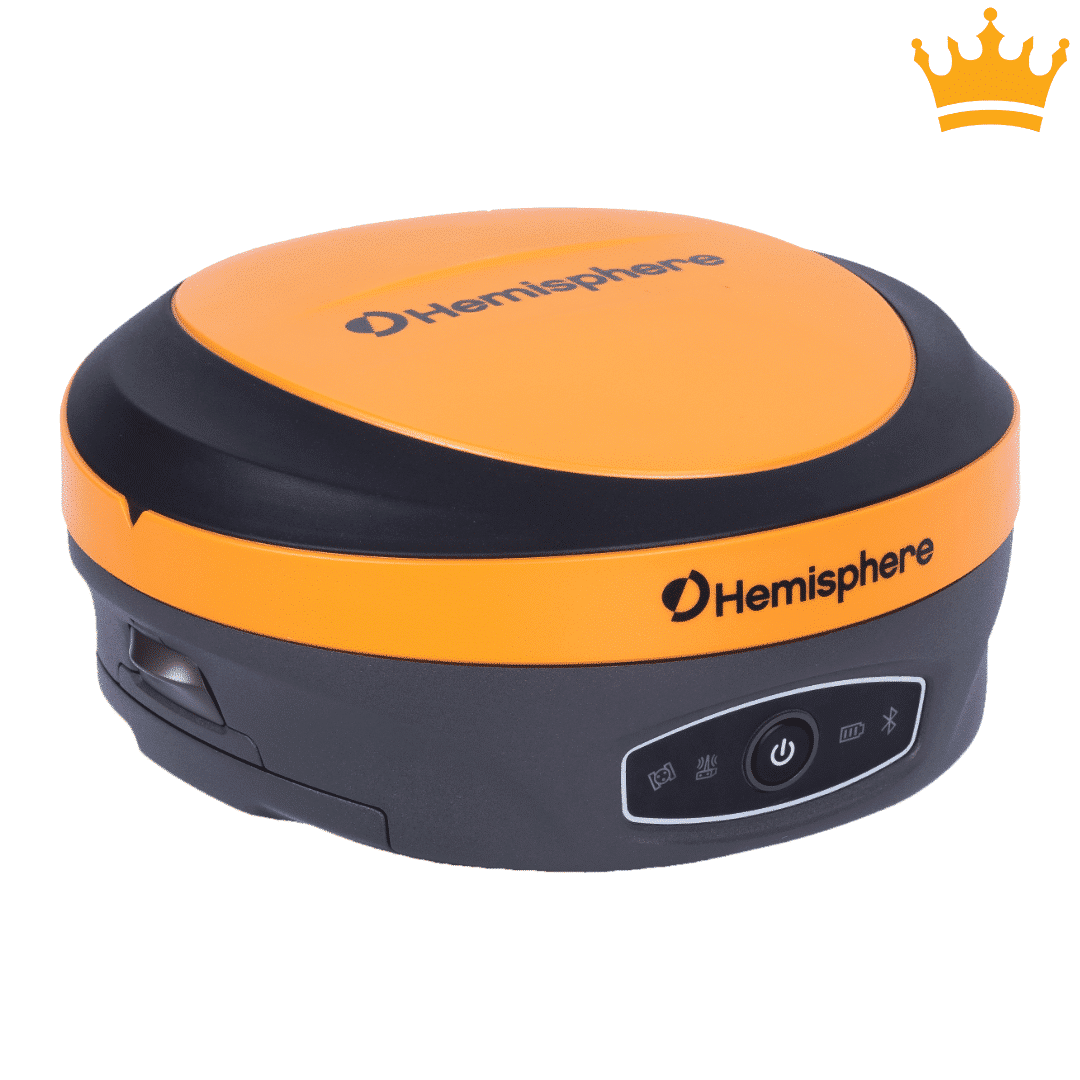
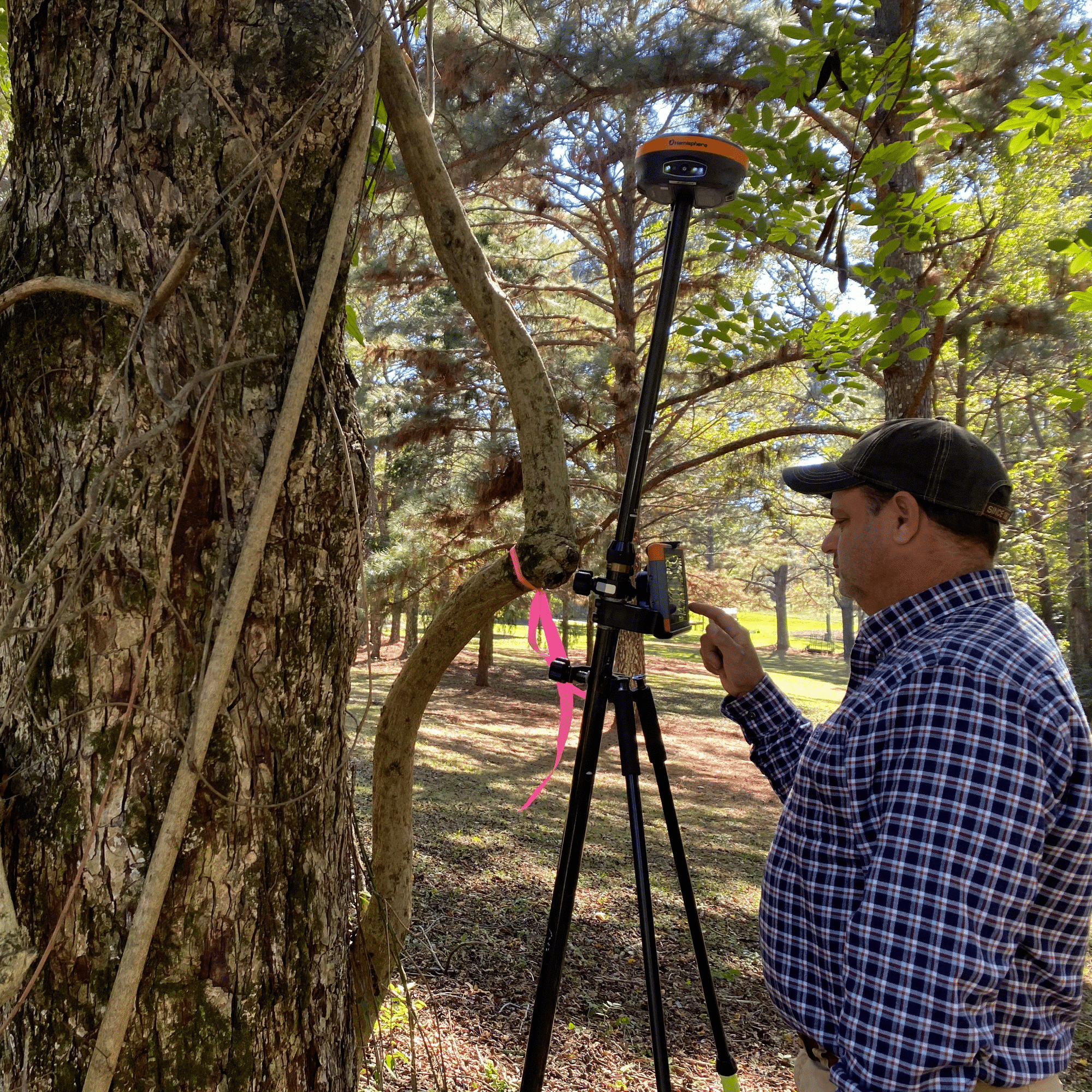
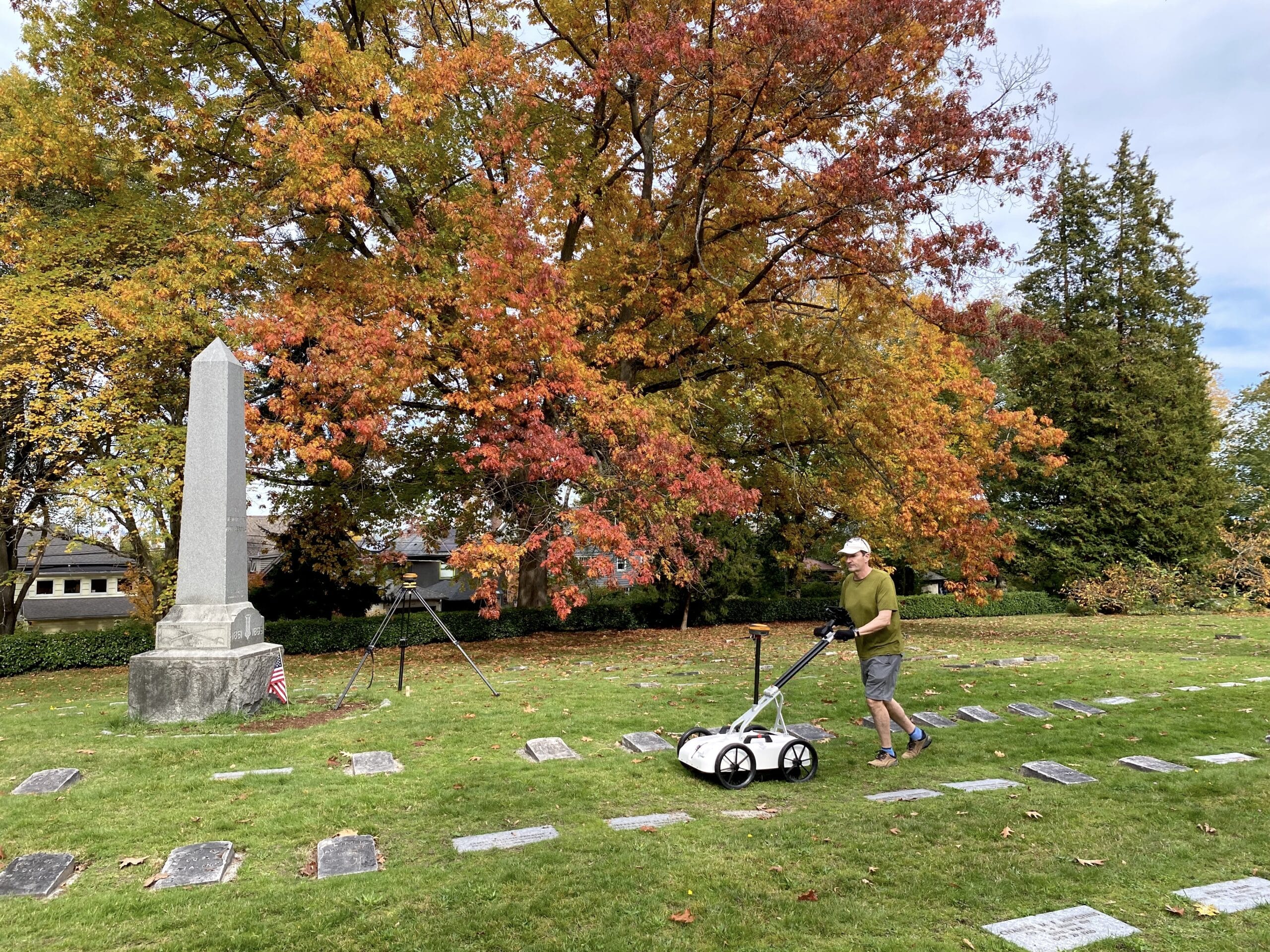
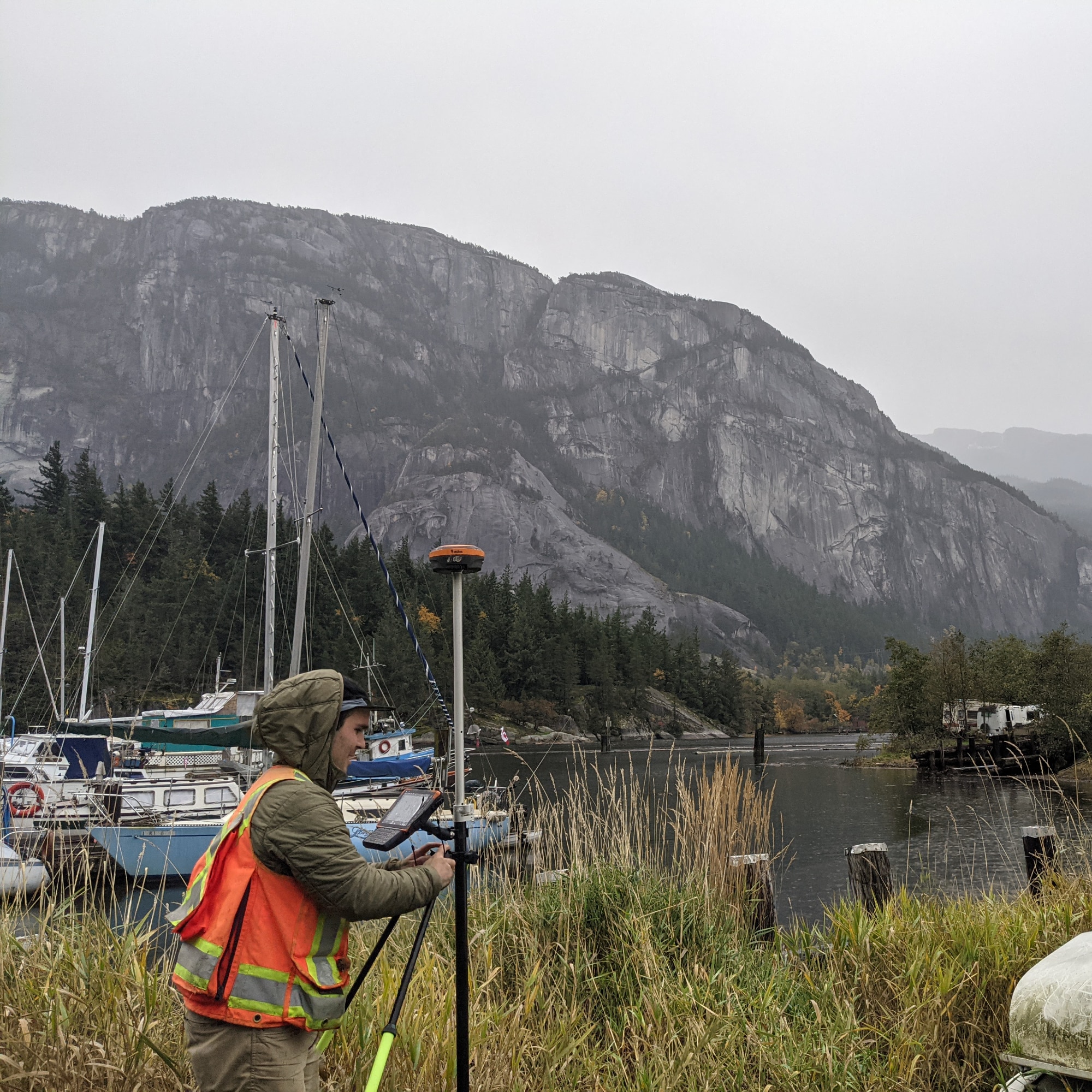
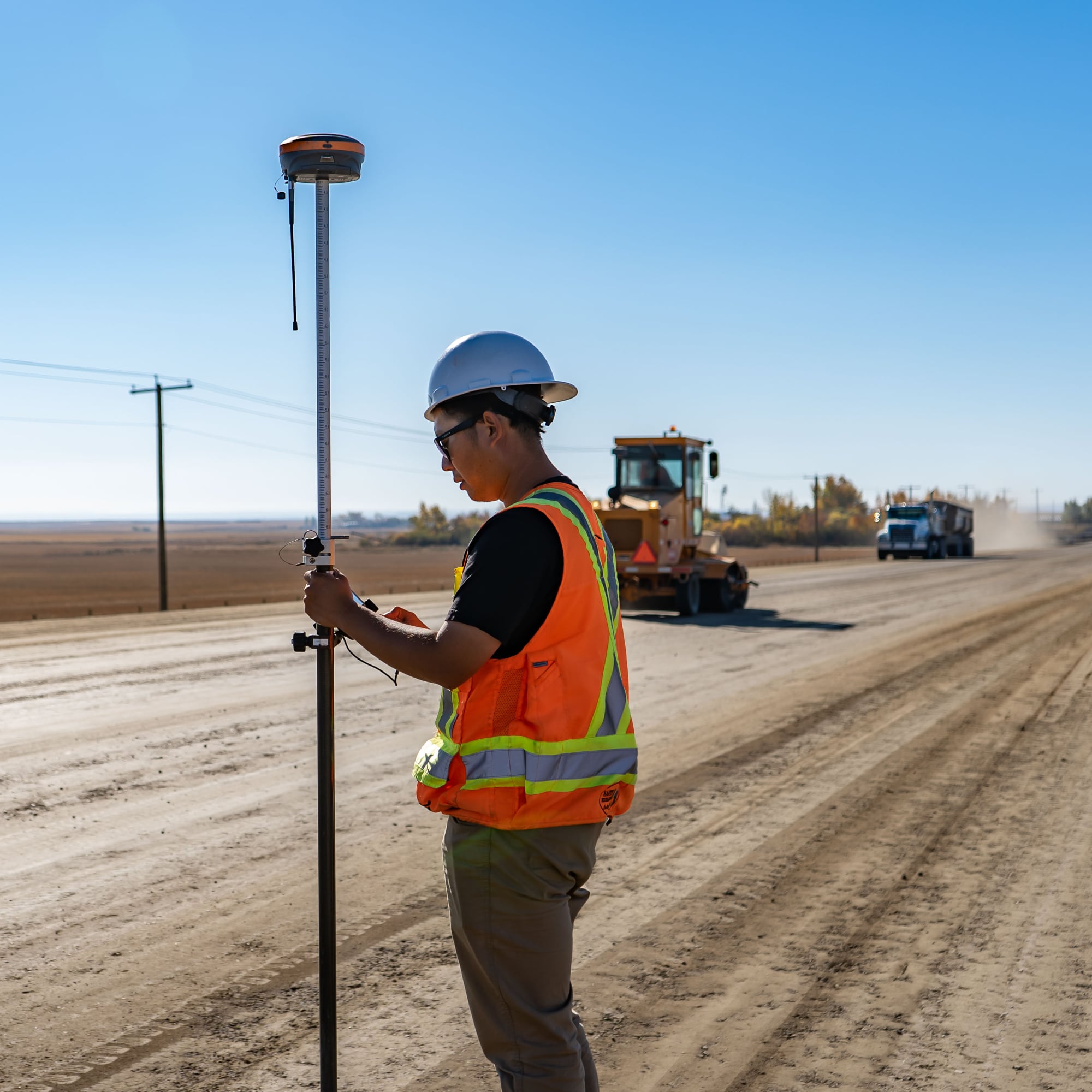
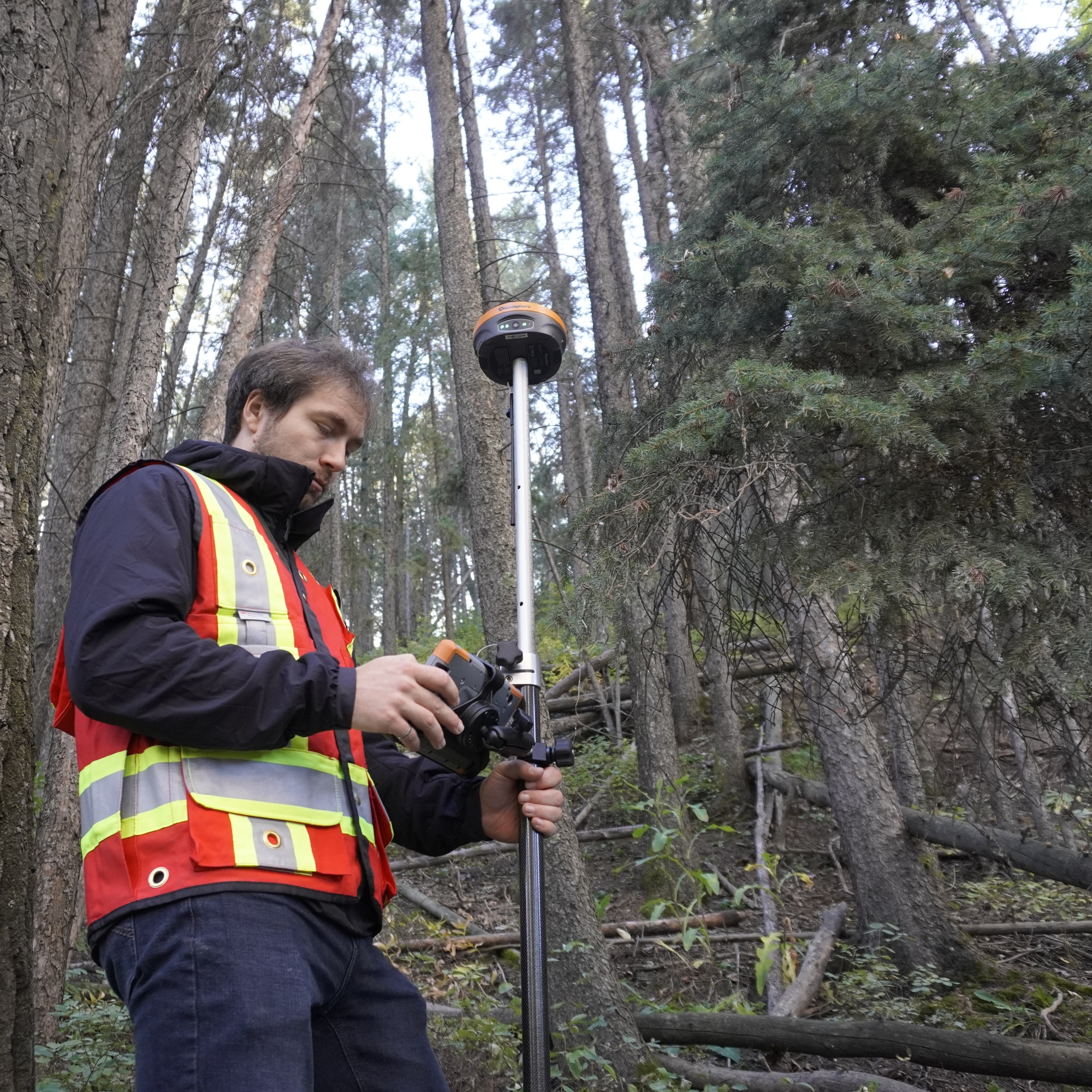

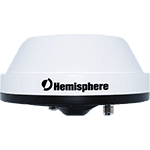
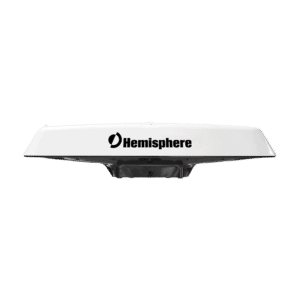
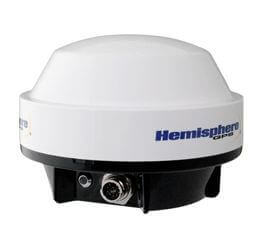
Cam Christianson –
The S631 really feels like an upgrade over the last generation. It feels better built, and the in-foliage and tilt performance is really convenient.
Reid Ostenberg –
The radio range of the S631 has been blowing me away. I haven’t even had to use my external radio. When paired with FieldGeniu, I get an easy-to-use solution that has all of the tools I need.
Allan Andres –
The tilt feature is wonderful, and the S631 works so well under canopy! I was a bit worried about moving to FieldGenius, but it is easy to use once I had it figured out.
Sid Sandback –
We love the tilt capacity on the S631, and we cannot say enough about the Bench-Mark support. We also love the Graphical Layout in FieldGenius, it’s so easy to use.
Tom Mehdi –
The S631 has been great, with tilt we are a lot faster, and the in-canopy performance is making a big difference. Once I got used to FieldGenius, i found it to be way faster.
Shamus McGee –
We love the fact that the S631 has a 10 km base-to-rover range, and that they will fix any constellation. FieldGenius has to been the easiest and most user-friendly surveying software we have ever used.
Rudi van der Merwe –
The S631 gives us consistent and accurate results in mountainous and foiliage-covered terrain. We found that FieldGenius was easy to learn and we keep discovering more powerful features.
Connor Traves –
The RTK-fixed coverage with the S631 has been vastly improved over the older S321. FieldGenius has freed up our drafters, and made construction layout a breeze.
Dustin Hicke –
The field crews appreciate how light it is compared to the other models. In addition, the tilt sensor is a great feature to help speed up our fieldwork.
Greg Skelhorn –
The S631 is proving itself to be reliable and fast in all conditions. We have seen a definite performance boost with the addition of the S631.
Ed –
I have been really impressed with the S631 base and Rover system, particularly given its price point compared to “bigger” name brands. However, what I have found most impressive is the customer service provided by Benchmark. I have worked with many dealers and manufacturers over the years who are often happy to dump you once they have made their sale. It is no exaggeration to say Benchmark are SECOND TO NONE. They answer questions promptly and are always there to help problem solve. If you need survey gear, use these guys.
Anthony McRae –
I recently purchased the Hemisphere S631 base and rover along with the Mesa3 tablet with Field Genius. The product is just as good, or better, as I hoped it would be. I have ran a Carlson BR x7 for several years and the Hemisphere is as good, or better, than those units and at a much more affordable price. The guys and gals at BenchMark have been great to deal with and I have no complaints. Their online training has been great help and the couple of times I’ve called with questions, they have been spot on. If you’re in the market for some surveying equipment, I would highly recommend giving them a call.
Wes Bertoldi –
The quick fixes and accuracy of the S631 in tree canopy has been impressive. Rene and David made the transition to FieldGenius easy, and were very responsive to my questions.
David Harris –
What I really like about the S631 is that I can get a fix where no other GPS unit can go. With FieldGenius, I keep finding new features that are useful for everyday surveying.
Tim Kline –
We purchased the Hemisphere S631 recently, everyone with company were very quick to respond and help with any questions that we had, continue with excellent customer service. The equipment has worked great and in my opinion out performed many others.
Jay McArthur –
Couldn’t be happier with my purchase from Bench Mark and dealing directly with Rene. The knowledge and professionalism is top-notch. When I call, an actual person answers! Which is very rare in todays world. The gear turned on and worked from the start, and all minor questions are answered right away. Results from the S631 base/rover combo are unreal.
Brock Bowman –
Working with this company on my recent equipment upgrade was a great experience. The product S631 Base/Rover package is the best I have used to date. Rene and the team done exactly what they said they would and the support is wonderful. You can call and they answer the phone for support every time!
Javier Rodriguez –
I am very satisfied to be able to buy a GPS unit with an excellent company like BENCHMARK. At the beginning of the purchase, there were fears due to the shipping process, but it is a company that does not skimp on helping and keeping the customer sure of what they are buying. Good service, good communication and they are willing to help all their customers. Thanks to René for the good treatment and for giving me confidence to achieve this purchase.
Heath Butler –
Working with Rene and the team at Benchmark has been one of my best buying experiences ever. Rene and the team are very knowledgeable in their products and get you setup with exactly what you need to be efficient and successful. The s631 receiver and mesa tablet is been the best RTK GPS setup I have used to date. The signal and solutions achieved in heavy canopy are amazing, the tilt compensation has save me so much time not have to measure and do offsets. The support staff is astounding and always walk me through any questions or issues with a step by step approach. I will definitely be back when its time to upgrade.
Tyler Button –
Very pleased with the S631 base and rover we purchased from Rene. I wanted to wait awhile to see how the equipment performed and I can safely say it has performed flawlessly. After about 6 months of use I can safely say I have not had one problem. The provided literature for start up and tips sheets are very well put together. I have also called for field support several times and always got a resolve immediately. Oh and there online YouTube videos are a excellent resource as well. I strongly recommend getting a mesa tablet for data collection as well.
Anthony Thompson –
We ordered a new S631 GPS system, payment and shipping was
extremely fast and efficient. Sent the money on Monday had
the units by Friday, during Christmas holiday that’s pretty fast. Up and surveying again on Monday. Thanks Rene
John –
I work for a land development company that needed help with work organization and shooting as-builts. Rene and his team at Benchmark were very helpful finding the right product for our needs.
We purchased a Hemisphere S631 from Benchmark, they helped us set it up and they made the process very user friendly. So far I am amazed with how well the product works. Especially in the dense tree areas. We work in a small mountain town and have never had any issues with maintaining a fix.
Benchmark takes the time to help there clients, I recommend that anyone in the market for survey equipment reaches out to them.
Razvan Scutaru –
Rene and his team have been super helpful from making us understand our new S631 Hemisphere RTK kit to pre-configuration and training. Would recommend to anyone looking for a high quality system with a team that stands behind their products. Cheers from Stratus Aerial Geomatics!
Kia Shayestehfar –
I tried out one of their new Hemisphere S631 RTK systems over the weekend. I was able to survey control points under dense canopy with good results. I would recommend Benchmark to anyone looking to purchase new GNSS survey gear.
Richard Reece –
Purchased the new Hemisphere S631, and thus far, the best system I have ever used. We work out of Eastern Kentucky in the Appalachian Mountains with plenty of deep hollows, ridges and vast amounts of tree canopy. Have had the system out for the last week, and have been very impressed, we have been able to get a surefix in almost all situations, and usually under two minutes, even in a hollow under a cliff line, it was amazing. I would highly recommend the S631 to anyone needing a system that will work in any canopy situation.
Wes Bertoldi –
I purchased my Hemisphere S631 base/rover at the end of 2020. It has been a huge asset to my productivity. The team at Bench mark have been very helpful. If I ever have a question, Rene or David have always been very quick with a solution. I wouldn’t hesitate recommending Bench Mark.
Dave Renauld –
Excellent customer service to begin using new Hemisphere S631 equipment and MicroSurvey FieldGenius software. Very knowledgeable of the product and the survey capabilities. Helped me to really understand the new equipment and options is gives me as a surveyor.
Garrett Bullee –
We love the Hemisphere s631 RTK, works great under tree canopy, and we totally prefer Fieldgenius over SurvCE. Thanks so much for all the help.
Charles S –
We love the Hemisphere s631 RTK GNSS with Field Genius software, thanks Bench Mark for the GREAT price and all the help.
Andrew Wilkinson –
These guys are amazing!…the Hemisphere solution they offer is a game changer, the only thing thats better is the remarkable service and support and very clear and helpful training videos…buy with confidence you won’t be dispaointed!
Mark LeFresne –
The communication and smooth transaction was the excellent. They take pride in their work and stand 100% behind the product and customers. Purchased S631 RTK kit and looking forward to keeping this relationship on-going.
Lewis Cox –
I’m doing the work of 3 crews using your S631s, so additional units won’t be needed!
I would have never dreamed that these units would be this strong I get shots under canopy that should never happen. I realize I’m now using 4 sat systems rather than 2, but there must be some real high powered electronics inside these units that can discern extreme multipathing and compute out the garbage, it’s quite incredible.
I just finished a 130 acre survey by myself (I’m a one-man show) and never touched my robot. As a matter of fact, I’ve only touched my robot twice this year since getting these S631s back in January, and that was to do a small topo and to stake out a house. These units have performed far beyond my expectations!!! These units have been life changing!!
Thanks so much for everything you, Nolan and David have done for me, you guys rock!!!
Maura McKeough –
Our experience purchasing an RTK system from Bench Mark was outstanding. The staff demonstrated impressive knowledge, investing time to understand and meet our specific requirements. Their assistance was not only helpful but also delivered with a friendly manner. The responsiveness to emails showcased their commitment to customer satisfaction. What truly exceeded expectations was the swift delivery – within a week of the order. Bench Mark’s expertise, excellent service, and efficiency make them a top choice. I highly recommend their RTK systems for anyone seeking a seamless and customer-centric experience.
Joe Manning –
Great service and prompt delivery.
Arlene Lahti –
The sales team were helpful and once the order was placed, the equipment arrived quickly!
Vince Boothe –
We recently bought an S631 system after being with Topcon for 10 years. Bench Mark has been great to deal with. The GNSS receivers are a big step up in terms of performance. Even better though is the technical support. They have a lot of PDF and video training resources available. Any questions we have had get answered quickly by email. I have also called the help number and had someone answer my questions right away.
Patrick Crosschild –
Had no problems with the purchase of our new Hemisphere S631.
Stewart Leadbitter –
René was amazing throughout the whole process. This was my first time GPS purchase and he was very patient with me and helped me all from beginning to end.
Will –
All staff are very professional and helpful.
Tim Platz –
Purchase experience was easy, looking forward to putting it through the ropes and seeing how it performs.
Jay Bell –
We have been very pleased with Bench-Mark. From equipment to services top notch!
Chelsea Mathieu –
We purchased the Hemisphere S631 recently. The BENCHMARK team were always supportive and responded quickly to any questions. The new unit is user friendly, and the support team is wonderful to work with.
Nate Wilson –
The staff is very knowledgeable and courteous. They made our buying experience an enjoyable one.
Jason Smith –
Benchmark is top notch. My new hemisphere s631 is a game changer…
Ethan Smith –
The entire Benchmark team has been great throughout our entire purchase of our two sets of Hemisphere S631 Base and Rover sets. They have been extremely helpful in helping us start our new business and making sure we had all the materials needed to get up and running as soon as we recieved our equipment.
Tim Worley –
The entire Benchmark team has been great throughout our entire purchase of our two sets of Hemisphere S631 Base and Rover sets. They have been extremely helpful in helping us start our new business and making sure we had all the materials needed to get up and running as soon as we recieved our equipment.